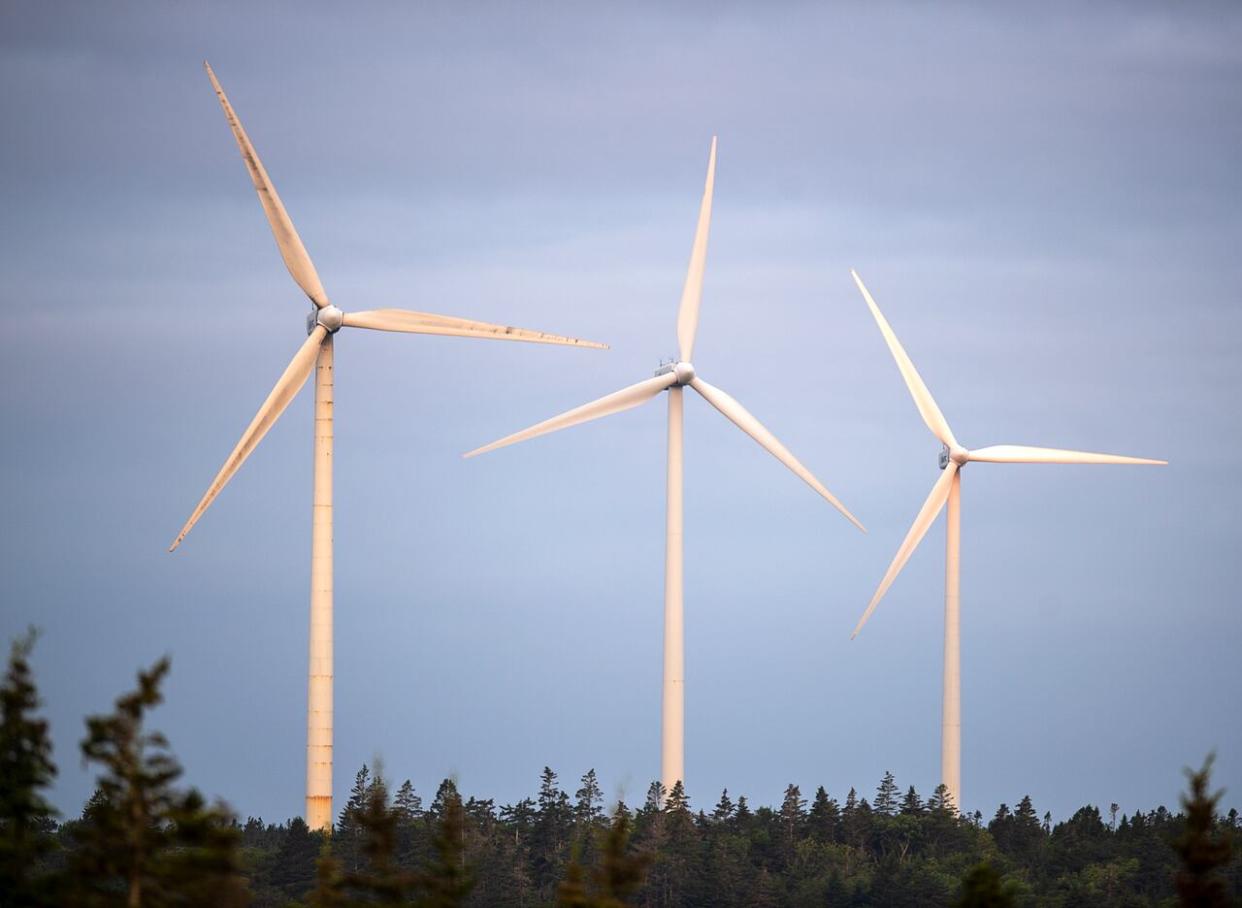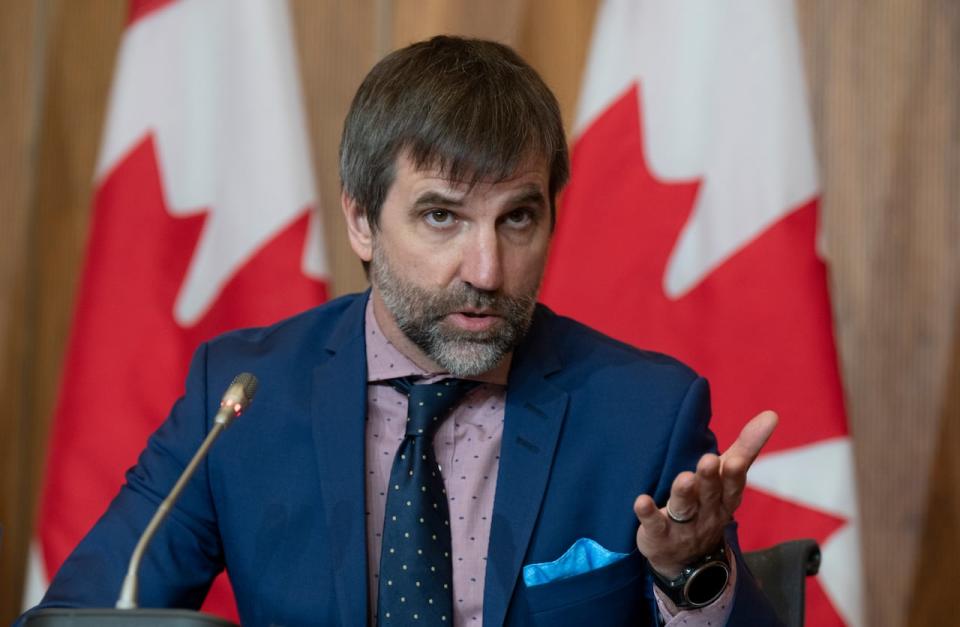Port au Port wind project needs full federal assessment, not 'Dinky Toy' provincial one, says critic


A wind and hydrogen project proposed for Newfoundland's west coast won't face a federal environmental impact assessment. (Andrew Vaughan/The Canadian Press)
World Energy GH2's proposed wind and hydrogen project on Newfoundland's west coast won't be getting a federal environmental assessment.
Federal Environment and Climate Change Minister Steven Guilbeault announced Friday that the project, proposed for the Port au Port and Stephenville area, doesn't warrant designation under the federal Impact Assessment Act — a decision criticized by Helen Forsey, head of the N.L. chapter of the Council of Canadians.
"It really needs a federal assessment, a full comprehensive federal assessment, not the Dinky Toy assessment the province demands," Forsey told CBC News on Monday.
The non-profit environmental advocacy group says a federal assessment would be more comprehensive and independent than the provincial assessment.
Forsey said groups like hers could then apply for intervenor status and get funding to do their own research and provide it to the federal assessment board.
Guilbeault, in a statement posted online Friday on his department's website, said, "The legislative processes that currently apply to the project and related consultations with potentially impacted Indigenous peoples provide a framework to address the potential adverse aforementioned effects and concerns raised by Indigenous peoples and members of the public."
That means no federal environmental assessment for the project, which is working its way through the provincial assessment, which involves Fisheries and Oceans Canada, Environment and Climate Change Canada, Transport Canada and Health Canada participating as federal experts.

Federal Environment and Climate Change Minister made his decision on Friday. (Adrian Wyld/The Canadian Press)
Forsey has been a vocal critic of the World Energy GH2 project, saying the construction of 164 wind turbines on the Port au Port Peninsula would "wreak havoc" on the local environment.
"If they were doing it the right way, that would be great. I believe in green energy. I believe in wind energy. But massive, massive turbines 600 feet tall crowded onto a tiny space, a fragile space like the Port au Port Peninsula … with 4,500 people living there, it's just not on."
Forsey said the Council of Canadians is also concerned with the end product — ammonia to ship across the Atlantic Ocean to European markets — and how green the entire process would be if companies needed to use the electricity grid to power the process when the wind isn't blowing.
Newfoundland and Labrador Hydro is projecting a massive spike in demand by 2050 and is exploring the possibility, among other options, of building a new diesel plant to increase capacity.
"What's that going to do to our hydro rates, and our capacity and to our greenness if we're using diesel partly to provide power to make hydrogen to ship to Germany?" Forsey said.
Download our free CBC News app to sign up for push alerts for CBC Newfoundland and Labrador. Click here to visit our landing page.


